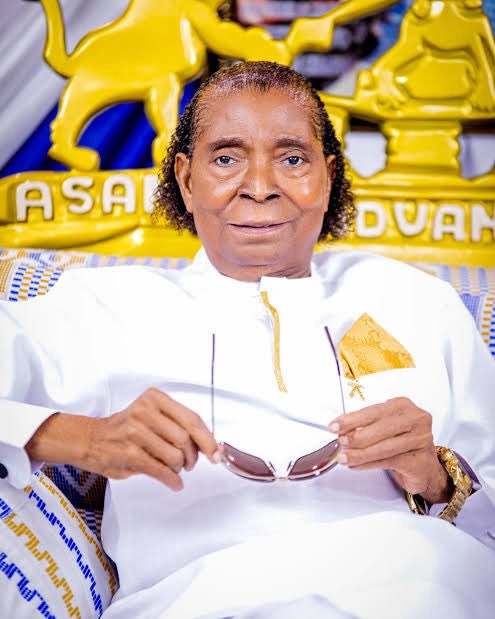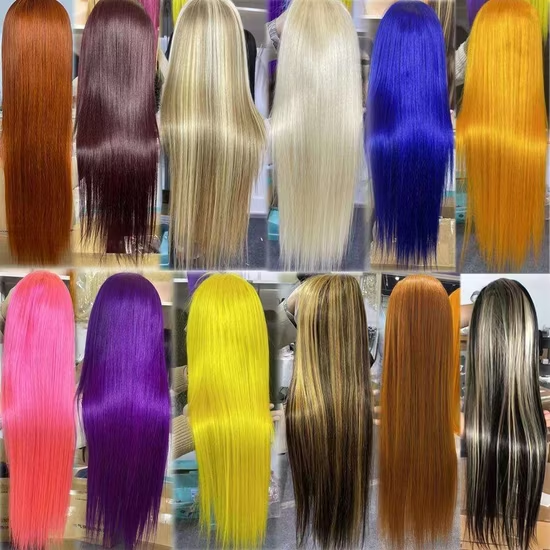People & Lifestyle
Six clues he’s pretending to love you

It is very difficult to distinguish a fake relationship from a real one. Many of us live under the illusion of a long-lasting relationship when what we have is a mere affair.
Numerous things need to be considered when in a ‘real relationship’ because there are a lot of people who could fool us into believing that they are truly attached to us, but what they seek might be just intimacy or merely to pass the time.
We should learn to differentiate between people who mean it when they say that they love us and those who do not.
READ ALSO: The differences between ‘I love you’ and ‘I’m in love with you’
Here are six quiet clues he’s only pretending to love you, according to psychology:
The amount of PDA feels excessive
Apparently, it might seem that a couple who are very affectionate towards each other in public might share a very loving relationship in private. This might not always be the case.
Although PDA, to a certain extent, is good, an excessive display of affection can indicate a compensatory behaviour. It is a way of maintaining the illusion of a loving relationship in front of others and themselves as well.
This is not a very rare occurrence. Many couples who do not share a very good bond often feel the need to cover it up with their show of affection. Appearances can be quite misleading. So, the next time you see a happy couple holding hands, it might not necessarily mean that they are in love.
READ ALSO: 12 subtle behaviors of women who are thinking about leaving their relationship
There are no special moments
Being in a relationship with a person you truly love gives you a different feeling altogether. If you do not find anything extraordinary in your relationship, then you’d better not be in a relationship at all.
It does not mean that it needs to be something gala or grand but you should at least find pleasure in the small things like a memory of you together which makes you happy, or calling out nicknames to each other.
It is not love when your relationship seems to be ‘normal’ all the time. There must be something from which you could derive excitement.
Some people might be more outwardly romantic, while others may show their affection through acts of service or emotional support. While romantic gestures can be important, true love often involves more subtle cues, like genuine interest in your life, consistent support, and a willingness to understand your needs.
READ ALSO: Love & Relationships
There are no serious discussions
Communication is a very fundamental part of a relationship. You and your partner should feel free to open up in front of each other and should be able to discuss matters of the heart.
Communication does not mean merely talking about the weather and other inconsequential things, you should be able to talk about serious and important issues as well.
Couples who are truly in love with one another talk about future plans, having children, traveling places et cetera.
It should also be kept in mind that arguments and fights are also parts of an honest relationship. While discussing serious things, arguments are bound to happen and also remember that they will be resolved at the end of the day.
But if you do not discuss anything with your partner that matters to you then you should probably re-evaluate your relationship.
It’s a power game
When your relationship becomes all about winning an argument then you might not be in a ‘true relationship’ after all.
In a situation where your only concern is to prove your point right, you place your ego over the feelings of your partner.
Although arguments are very mi h parts of every relationship, sometimes one of the partners has to step down to end the fiend even if the other is wrong.
This is because being in a relationship is not always about being right, rather it is about giving space, compromise and care. Instead, the necessary time should be given to the partner so that one realised about one’s mistakes in the future.
Individuals who engage in power games often do so to control others or gain an upper hand. This can involve twisting words, making promises they don’t keep, or twisting events to make the other person feel guilty or inadequate.
You don’t know much about each other
If you share an honest bond with your partner, you would be keen to know about your partner’s family and friends. If you want a future together, you would be interested in knowing your partner’s close ones.
It is only when the relationship does not matter to you and you know that it would probably not last long enough, that you do not show much interest in learning about your partner’s friends.
It is applicable in the case of your partner as well. It can only mean that he does not want to get too involved with you if he does not introduce you to his parents or friends.
Physical intimacy is the only thing keeping you together
You have wonderful intimacy, but there is nothing else that gives you much excitement from the relationship. Being physical is the only way you guys can maintain your bonding.
If you can find no real trust, passion, care, among others in the relationship, then it’s very likely that you are not attached. Many guys nowadays get into relationships only to go to bed.
While physical intimacy is vital to a healthy relationship, relying solely on it can be a red flag. When this physical connection solely sustains a relationship, it may indicate a lack of emotional intimacy and deeper connection, suggesting the person is not truly invested.
In the beginning, he might flirt with you, make you feel like you are the centre of his universe, but in reality, all they want is to get you in bed. But not all guys are like that, and there are ones who are truthful and honest.
graphic.com.gh
People & Lifestyle
From Bekwai To The World: The Biography Of Apostle Kwadwo Safo, The Kristo Asafo Founder And Kantanka Automobile Innovator

Early Life And Education
Known as the “Star of Africa,” Apostle Dr. Kwadwo Safo Kantanka is a man whose life remarkably combines philanthropy, invention, and religion. He was born on August 26, 1948, in Bekwai, Ghana’s Ashanti Region, to petty merchant Madam Akosua Amoanimaa and farmer Opanin Yaw Safo. He gained the humility and curiosity that would ultimately determine his fate from his humble origins.
Kwadwo Safo attended the Ghana Technical Works Institute in Kumasi to pursue technical training following his completion of elementary and secondary school. He worked for companies including VALCO, West Africa Metals, and the French Africa Company in his early years as a welder and mechanic. He gained a solid foundation in engineering and mechanics from these experiences, but his life quickly took a different turn.


READ ALSO: BREAKING: Apostle Kwadwo Safo Confirmed Dead
Ministry And The Kristo Asafo Mission
Kwadwo Safo was called by God to devote his life to gospel preaching in 1969. On February 3, 1971, two years later, he established the Kristo Asafo Mission in Accra. In Accra New Town, what started out as a tiny prayer group swiftly expanded into a vibrant Christian ministry.
For fusing spirituality with real-world empowerment, Kristo Asafo gained notoriety. Apostle Safo placed a strong emphasis on discipline, independence, and applying one’s faith to day-to-day activities. The church grew throughout Ghana and even reached Ghanaian communities overseas under his direction. He was more than just a preacher to his followers. He served as a mentor who pushed them to further their spiritual development while also pursuing education, skills, and entrepreneurship.

Innovations And Industry
The vision of Apostle Safo went much beyond the pulpit. He started creating local car prototypes in the 1990s in an effort to demonstrate Ghana’s ability to compete on a worldwide scale. In 1998, his business, Kantanka Automobile, manufactured its first saloon automobile. Later models, such as the Onantefo series, demonstrated robustness, contemporary style, and regional inventiveness. Kantanka Automobile is a great representation of Ghanaian ingenuity today.
However, his inventiveness extended beyond cars. Additionally, Apostle Safo has created and produced locally manufactured robotics, television sets, sound systems, and even military-grade equipment. His creations demonstrate his conviction that Africans can use their own skills and resources to address their own problems.
Education And Human Development
Apostle Safo founded the Apostle Safo School of Arts and Sciences (ASSAS) in Awoshie, Greater Accra, because he believed that education was the key to the advancement of the country. The school fosters the development of young brains into leaders and innovators by providing courses in science, business, visual arts, and home economics. His legacy of developing ability via knowledge and skills has been carried on by the numerous successful careers of his students and protégés.



Philanthropy And Social Impact
An integral part of Apostle Safo’s work has always been philanthropy. On a regular basis, usually around his birthday, he gives money, food, and clothing to widows, orphans, and disadvantaged groups. He received a great deal of praise for his August 2024 payment of GH₵42,000 toward the medical expenditures of 14 female patients at the Komfo Anokye Teaching Hospital. Because of his scientific endeavors and social interventions, he has become a father figure to many.

Recognition And Legacy
The accomplishments of Apostle Safo have received recognition on a national and worldwide level. In the UK, he was given the GUBA Innovative Pioneer Award in 2017. In recognition of his contributions to science and engineering, he has also received academic distinctions, such as the title of Emeritus Professor.
Nevertheless, he has publicly bemoaned the fact that his efforts are sometimes underestimated in Ghana in spite of these honors. He has attacked the tendency to favor imported items over domestically produced ones, which hurts homegrown businesses. But his determination is unwavering. He remains committed to his goal of an independent Ghana, which drives his innovation, preaching, and charitable endeavors.


Conclusion
Apostle Kwadwo Safo is not just an inventor or a preacher. He is a trailblazing intellectual who has demonstrated how compassion, science, and faith can all work together to change society. He has broken down barriers and changed the lives of many people, starting from modest beginnings in Bekwai and going on to lead a church, an automobile firm, and an educational institution. His tale serves as a reminder to Ghanaians and all Africans that greatness starts with a vision and is fostered by tenacity, imagination, and an unwavering faith in God.
People & Lifestyle
The Fascinating History Of Wigs And Hair Extensions

Wigs and hair extensions may look like modern beauty essentials, but their roots go back thousands of years. Across cultures and generations, they have been worn for protection, style, identity, and even spirituality. Their story shows us how beauty and tradition are deeply connected, constantly evolving with time.
Ancient Egypt, Where It All Began
The earliest records of wigs date back to Ancient Egypt around 2700 BC. Egyptians shaved their heads for hygiene, but wigs were used to protect against the sun and add a touch of elegance. Wealthy citizens wore wigs decorated with beads, gold, and oils, while simpler versions were worn by the less privileged. This trend spread to Ancient Greece and Rome, where wigs became a symbol of beauty and social status.



Royal Courts And European Fashion
In the 16th century, wigs returned to the spotlight when Queen Elizabeth I of England popularized them at court. By the 17th century, King Louis XIV of France introduced the large powdered wig, which quickly became fashionable across Europe. These wigs were not only about appearance, they carried political and social weight. Judges, lawyers, and politicians wore them as symbols of authority, and in some countries this practice continues today.


From Victorian Elegance To Modern Glamour
By the 19th century, wigs became less common, but hair extensions rose in popularity. Victorian women used hairpieces to achieve fuller hairstyles. In the 20th century, wigs found a place in theater and film, helping performers transform instantly. The 1960s and 1970s saw wigs move into mainstream fashion, with celebrities embracing them as tools of self-expression. Synthetic fibers made wigs affordable and widely accessible, allowing more people to experiment with new looks.


Beyond Fashion And Style
Wigs and extensions have always held cultural and spiritual importance. In Orthodox Judaism, married women wear wigs, known as sheitels, for modesty. In many African cultures, wigs and braids are not just hairstyles but powerful symbols of heritage, age, and social standing. They are often used during traditional ceremonies to represent ancestry, identity, and pride.


Technology, Media, And A Global Industry
Today, wigs and extensions are more advanced and natural-looking than ever. Lace-front wigs, clip-ins, and high-quality synthetic fibers allow for effortless transformations. Social media and celebrity culture have also fueled demand, turning wigs into a billion-dollar global industry. However, discussions around ethical sourcing of human hair continue, raising questions about fairness and sustainability in the beauty market.



Wigs In Health And Confidence
Beyond fashion and tradition, wigs play a vital role in healthcare. Many people experiencing hair loss due to medical conditions such as alopecia or chemotherapy treatments rely on wigs to restore confidence and a sense of normalcy. In this way, wigs are not just about beauty, they provide emotional support and dignity during challenging times. The growing variety of natural-looking options ensures that individuals can find styles that truly reflect who they are.


The Future Of Hair Innovation
Looking ahead, technology will continue to shape the wig and extension industry. From 3D-printed wigs to eco-friendly synthetic fibers, innovation is making products more sustainable and personalized. Designers are also blending cultural traditions with modern fashion to create new trends that celebrate both heritage and creativity. The story of wigs and extensions is far from over, and the next chapter promises even more exciting transformations.


A Timeless Story Of Reinvention
From the deserts of Ancient Egypt to fashion runways and online platforms, wigs and hair extensions have never gone out of style. They have adapted to every era, reflecting beauty standards, cultural traditions, and personal expression. Their history reminds us that hair is more than appearance, it is identity, heritage, and creativity woven together.


People & Lifestyle
The Surprising History Of High Heels And Their Origins

When people think of high heels today, the image that often comes to mind is one of women’s fashion, glamour, and elegance. Yet the history of high heels is far more complex. In fact, these shoes were first created for men, serving practical, cultural, and political purposes long before they became linked to femininity.
The earliest evidence of high-heeled footwear dates back to 10th-century Persia. Cavalry soldiers wore shoes with elevated heels to keep their feet secure in stirrups while riding. The design was not about style but survival, giving riders better balance and control in battle. This functional footwear later traveled to Europe, where it quickly acquired new cultural meaning.

By the 16th and 17th centuries, European men had adopted high heels as a symbol of wealth, masculinity, and social rank. Height was strongly associated with authority, and heels offered a way to look taller and more imposing. King Louis XIV of France, famously known as the “Sun King,” wore elaborately decorated red heels, a privilege he restricted to his court as a sign of power and exclusivity. Heels became an essential part of noble fashion, with their height directly reflecting social standing.

High heels also carried a sense of gender fluidity in their early history. Both men and women wore them in European courts, though the designs differed slightly. While men’s heels were often heavier and sturdier, women’s were more slender and decorative. They were seen less as feminine accessories and more as unifying symbols of wealth and privilege.

The shift came during the 18th century, when changing ideas about gender roles influenced fashion. Men began moving toward more practical and understated clothing, abandoning flamboyant garments and footwear. Women, on the other hand, retained high heels as markers of elegance and sophistication. Over time, this association deepened, and by the 19th century, high heels were firmly considered women’s fashion.

Today, high heels remain one of the most iconic and controversial items of clothing. While many wear them for style, beauty, or professionalism, they have also sparked debates about comfort, health, and gender expectations. Yet their surprising history reminds us that what we now see as a symbol of femininity was once created for war, adopted by kings, and used as a proud marker of masculinity and power.

-

 News5 months ago
News5 months agoGH¢49m Spyware Scandal: Ex-NSB Boss’s Claims Lack Credibility – Bright Simons
-

 Opinion5 months ago
Opinion5 months agoA LETTER TO GES
-

 Showbiz5 months ago
Showbiz5 months agoBogo Blay – Woman (Produced By FimFim)
-

 Showbiz5 months ago
Showbiz5 months agoKofi Kinaata Honoured with “Youth in Entertainment” Award at 2025 Millennium Excellence Awards
-

 Showbiz5 months ago
Showbiz5 months agoWebz – Odo | MP3 Download
-

 Sports5 months ago
Sports5 months agoEl Clásico Thriller: Barcelona Edges Real Madrid 4–3 in Seven-Goal Spectacle
-

 News5 months ago
News5 months ago‘Not Chosen by Merit’ – Ghanaian Prophet Predicts Short Papacy for Pope Leo XIV
-

 People & Lifestyle5 months ago
People & Lifestyle5 months agoThe differences between ‘I love you’ and ‘I’m in love with you’






















































